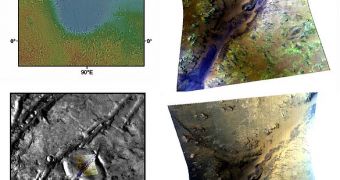NASA officials have recently announced that a new reconnaissance probe will be sent to Mars' orbit around 2016, in order to investigate the planet's mysterious methane emissions. In fact, the main goal of the mission would be to determine if the gas that can still be detected in the Martian atmosphere comes from geological or biological sources. On Tuesday, agency officials told the Mars Exploration Program Analysis Group in Washington, DC that the new orbiter could fly solo or with the help of the European Space Agency (ESA) ExoMars rover.
Launching a new orbiter is a sort of compromise for NASA, which originally envisioned sending another rover or lander on the Red Planet. But budget increases for the Mars Science Laboratory (MSL) missions, as well as delays in production, have rocketed the costs of the launch to $400 million. So, the American space agency will limit itself to sending just an orbiter in space. However, since this is its only sustainable option at this time, it will attempt to make the best of it and actually retrieve data that no other mission could.
NASA's director for Mars exploration, Doug McCuistion, says that “The majority of the way we're paying for that [delay] is funding that was going to be used for the 2016 mission.” For 2018, the agency has scheduled the launch of another rover on the Martian surface, as the “next step” in its ambition of one day being able to sample Martian rock and soil and then bring it back to Earth for analysis.
On the bright side of things, the yet-unnamed Mars orbiter will feature instruments that are so sensitive that they will be able to detect the concentration of various gases in the Martian atmosphere to a precision of several parts per million. That is comparable to the results that Earth-observing probes and satellites are sending back to scientists studying our own planet.
“None of the orbiters that are in orbit now or anything that we've done in the past were optimized for making these measurements,” Europe's Mars Express orbiter mission team member Sushil Atreya, from the University of Michigan, shares.

 14 DAY TRIAL //
14 DAY TRIAL //